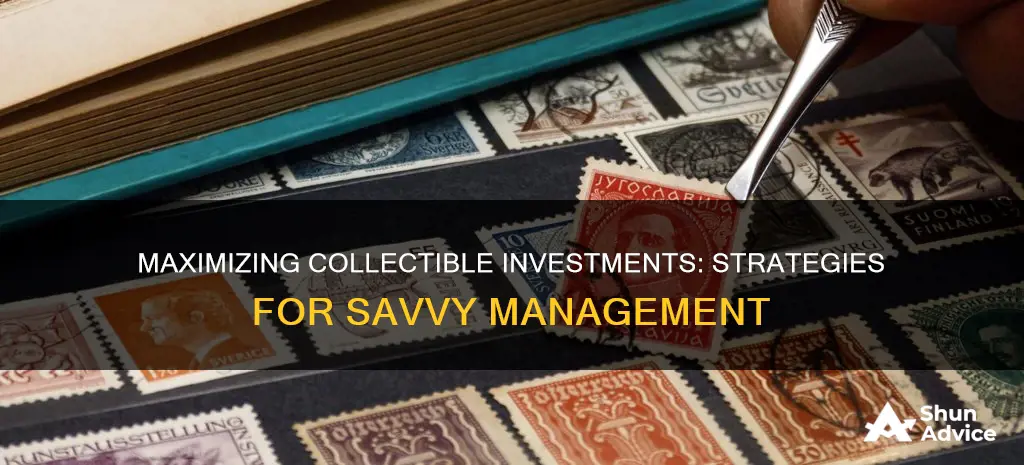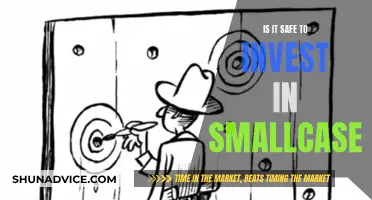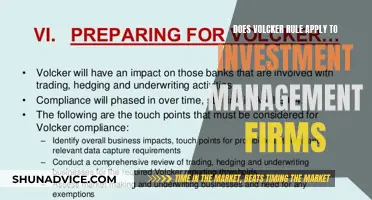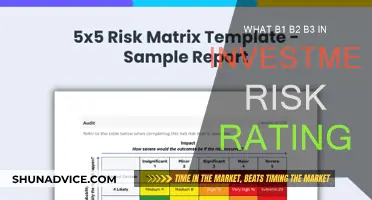
Investing in collectibles can be a great way to diversify your portfolio, but it comes with its own set of challenges. Collectibles are items that increase in value over time and are often driven by nostalgia and emotional appeal. While some collectibles are rare, others are mass-produced, such as Beanie Babies. The key to successful investing in this area is having a keen eye for market trends and predicting future popularity. Proper maintenance and care are also essential to retain the value of collectibles, and even a small amount of damage can significantly decrease their worth. When investing in collectibles, it is crucial to be aware of the risks, including fraud, high markups, and lack of liquidity. Additionally, collectibles may not generate passive income and can incur maintenance costs. However, for those with a passion for certain collectibles and the patience to wait for values to grow, collectibles can offer strong returns and personal enjoyment.
| Characteristics | Values |
|---|---|
| Diversification | Can provide your portfolio with diversification |
| Portability | Can be transported easily and sold or traded anywhere in the world |
| Enjoyment | You get to enjoy your collectibles while waiting for them to appreciate in value |
| Fun | True collectors revel in the thrill of the hunt |
| Easy access | Relatively simple to get your hands on through online marketplaces such as eBay or in local stores |
| Rampant fraud | Unregulated industry full of frauds, fakes and forgeries |
| Markups | Dealers are known for marking up items to make a profit |
| Tough comps | A collectible's value depends largely on its condition and rarity |
| Lack of liquidity | Cashing out depends on finding a buyer willing to pay your asking price |
| Damage | Any scratch, ding or blemish can cause a collectible to decline in value or become worthless |
| Storage and insurance | Collectibles can be ruined by sun or water damage and need to be insured |
| No income stream | Don't yield an income while you wait for their values to rise |
| Taxed | Sale is heavily taxed |
| Returns | Returns may be lower than a stock market index fund, a money market account, and most bond funds |
What You'll Learn

Understand the risks of investing in collectibles
Investing in collectibles can be exciting and rewarding, but it's important to be aware of the risks involved. Here are some key points to consider when understanding the risks of investing in collectibles:
Risk of Fraud and Counterfeits
The world of collectibles can be rife with scams and fraud. Dealers may sell counterfeit items, and even experts can be fooled by convincing fakes. It's crucial to be vigilant and know how to vet dealers and authenticate collectibles to avoid being ripped off.
Volatile Market and Subjective Value
The value of collectibles is often based on the tastes, moods, and perceptions of buyers and sellers, which can be temporary and change overnight. The market for collectibles can be unpredictable and volatile, making it a risky investment choice. The value of a collectible is also highly subjective and dependent on factors like rarity, condition, and emotional appeal.
Lack of Liquidity
Collectibles are considered illiquid investments because selling them depends on finding a buyer willing to pay your asking price. It can be challenging to find buyers, and you may get stuck with your collectibles, leading to potential depreciation in value.
Maintenance and Storage Costs
Some collectibles require special care and storage conditions to maintain their value. These maintenance costs can add up, especially for items like paintings that need controlled environments to prevent damage. Additionally, insurance costs for valuable collectibles can be significant, typically ranging from 1% to 2% of the item's value per year.
Difficulty in Price Comparison
Determining the right price to ask for a collectible can be challenging. While some collectibles have catalogs or guides, others do not, making it difficult to establish a fair price. Asking too little can result in losses, while asking too much may deter potential buyers.
No Guaranteed Returns
There is no guarantee of making money from investing in collectibles. Their value can fluctuate, and there may be periods where the market for certain collectibles is low. Additionally, collectibles do not generate passive income, and the returns may be lower than other investments like the stock market or bond funds.
Investment Managers: Sharing Personal Information?
You may want to see also

Know how to buy and sell collectibles
Before buying a collectible, it is important to do your research. Understand the market and the specific category of collectible you are interested in. For example, if you are interested in buying a vintage car, research the make and model of the car, its rarity, and its current market value. It is also important to inspect the condition of the collectible as any damage can significantly reduce its value.
When buying from a dealer, be aware that they will often mark up the price to make a profit. It is recommended to shop around and compare prices from multiple dealers before making a purchase. You can also purchase collectibles from other collectors, who are less likely to mark up the price. Online marketplaces such as eBay are a great place to find collectibles, as well as local stores, yard sales, thrift stores, and pawn shops.
When buying a collectible, ask the seller for a written guarantee, especially if it is an "unbelievable buy" with "several interested buyers". This will protect you in case the item turns out to be overpriced or fake. It is also a good idea to do your own research and read up on the items you are interested in to understand their value and how to care for them properly.
Consider purchasing collectibles insurance to protect your investment. This type of insurance covers accidental breakage, theft, flood, and other types of loss. While it may be more commonly associated with priceless items, it is still worth considering for lower-value collections.
When selling a collectible, it is important to know its value. Have the item appraised by a professional and research the going rates for similar items. You can sell your collectibles through online marketplaces, auction houses, or specialist dealers.
Tips for Buying and Selling Collectibles:
- Do your research and understand the market for the specific category of collectible you are interested in.
- Inspect the condition of the item as any damage can significantly reduce its value.
- Be aware of dealer markups and shop around for the best price.
- Ask for a written guarantee from the seller if the item is an "unbelievable buy".
- Do your own research and read up on pricing guides and care instructions for your collectibles.
- Consider purchasing collectibles insurance to protect your investment.
- When selling, have the item appraised and research the going rates for similar items.
- Utilize online marketplaces, auction houses, or specialist dealers to sell your collectibles.
What's the Difference: Investment vs. Asset Management?
You may want to see also

Be aware of the costs of maintenance and insurance
When investing in collectibles, it is important to be aware of the costs of maintenance and insurance. These costs can add up and impact the overall value and return on your investment.
Maintenance expenses are necessary to keep your collectibles in good working condition. This includes general upkeep, such as regular cleaning and inspections, as well as repairs to fix any damage. For example, if you invest in a vintage car, you will need to budget for oil changes, tire rotations, and engine maintenance. Similarly, if you invest in artwork, you may need to pay for special lighting and climate control systems to preserve the piece.
The cost of maintenance can vary depending on the type of collectible and how often upkeep is required. It is important to stay up to date with regular maintenance to keep these costs down. Neglecting maintenance can result in higher repair costs or even the need to replace the item altogether.
In addition to maintenance, insurance is another important cost to consider. Collectibles insurance protects your investment from accidental damage, theft, natural disasters, and other types of loss. While it may be tempting to skip insurance to save money, this could leave you financially vulnerable if something happens to your collectibles. The cost of insurance depends on the value of your collection, and it is typically calculated as a percentage of the item's value. For example, insurance for a $10,000 collectible may cost around $100 to $200 per year.
When budgeting for insurance, it is worth noting that some homeowners' insurance policies offer add-on coverage for collectibles. This can be a more cost-effective option, but it is important to ensure that the coverage provided is sufficient for your needs.
By being aware of the costs of maintenance and insurance, you can make more informed decisions about investing in collectibles and ensure that you are prepared to properly care for and protect your investments.
Saving and Investing: Economy's Growth Engine
You may want to see also

Learn how collectibles are taxed
The US government discourages the purchase and sale of collectibles, so their sale is heavily taxed. The Internal Revenue Service (IRS) categorises collectibles as alternative investments and includes things like art, stamps, coins, cards, comics, antiques, and other rare items. If you've owned a collectible for more than a year, it may be subject to a maximum long-term capital gains tax of 28% when you sell it. This is notably higher than the 15% capital gains tax for traditional investments. If you sell a collectible after owning it for less than a year, you'll be taxed at your ordinary income tax rate.
To calculate your taxable gain, you need to know your cost basis. This is the non-taxable portion of your collectible and is usually equal to what you paid for the item. If you bought the collectible, your taxable basis is the purchase price plus any associated broker and transaction fees. If you inherited the item, the basis is the fair market value (FMV) at the time of inheritance. If you've spent money on restoring or maintaining the item, you can add this to your basis. To calculate your net capital gain, subtract the basis from the sale price.
When reporting the money you make from the sale of a collectible, you must include the following information:
- A description of the collectible
- The acquisition and sale date
- Any adjustments to gain or loss
The capital gains tax on your net gain is capped at 28%. You may also be subject to a 3.8% net investment income tax, depending on your adjusted gross income (AGI). If you sell a collectible in less than a year, you will be taxed as ordinary income, which could be advantageous if your income tax bracket is less than 28%.
There are specific tax rules regarding the personal use of collectibles, precious metal ETFs, and donating collectibles to charity. If you use a collectible for personal use, such as hanging a painting on your wall, you will not be able to claim a capital loss. If you donate a collectible to charity, items with a value greater than $5,000 must be appraised, and the charity must sign Form 8283: Noncash Charitable Contributions.
Aggressive Investment Portfolio: High-Risk, High-Reward Strategy
You may want to see also

Recognise the difference between collectibles and traditional investments
Collectibles are considered an alternative investment, falling into the "other" category of investment assets. They are not the usual suspects like stocks, bonds, mutual funds or cash. Traditional investments, like stocks, are expected to return income payments or profit, or both. Collectibles, on the other hand, have no intrinsic value. Their value is based on the beholder's perception, and they are often subject to the tastes, moods and perceptions of buyers and sellers, which can be temporary and change overnight.
For example, a rare photograph or a work of art may pique the interest of collectors, but its value is not guaranteed and is dependent on the collector's interest and the condition of the item. A little damage can erase all the value of a collectible. This is because a collectible's value is based on nostalgia and other emotional factors, which can be erratic. Pristine condition can increase the value of a collectible.
Traditional investments, like stocks, have an intrinsic value based on the underlying brick-and-mortar company that the share represents. The value is produced by the company's earnings, which justify the stock price. Stocks and other traditional investments are also more liquid than collectibles, which can take a significant amount of time to transact. It is easier to turn stocks into cash, whereas collectibles may require proper marketing and authentication to find a buyer.
Additionally, collectibles do not generate passive income and frequently incur maintenance costs. They are also taxed at a higher rate than traditional investments. If you sell a collectible after owning it for more than a year, it may be subject to a maximum long-term capital gains tax of 28%. This is significantly higher than the 15% capital gains tax for stocks and bonds.
Therefore, it is essential to recognise the differences between collectibles and traditional investments before investing. Collectibles may be a rewarding investment, but they come with higher risks and require more time and effort to sell.
Portfolio Investments: Balance of Payments Impact
You may want to see also
Frequently asked questions
Collectibles are items that are worth more than their original sale price and are considered alternative investments. Their value increases over time and they pique the interest of collectors. Common types of collectibles include art, antiques, stamps, books, coins, trading cards, toys, and comic books.
Investing in collectibles can provide diversification to your portfolio. They are physical assets that can be easily transported and sold anywhere in the world. You also get to enjoy your collectibles while waiting for them to appreciate in value.
Collectibles are illiquid and may not produce an income. They are also subject to high taxes. Additionally, collectibles can be damaged, lost, or stolen, causing them to lose their value.
Potential collectors should consider the maintenance costs, insurance, and security of the items. It is also important to be aware of the risk of counterfeits and the potential for lower returns compared to other investments. Researching the market and having a personal interest in the collectibles category is crucial.







